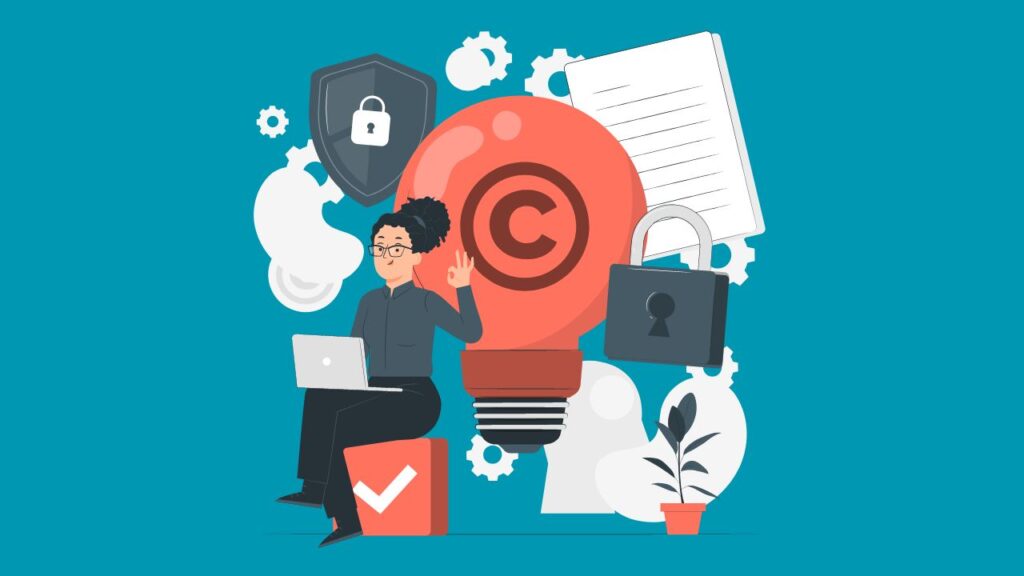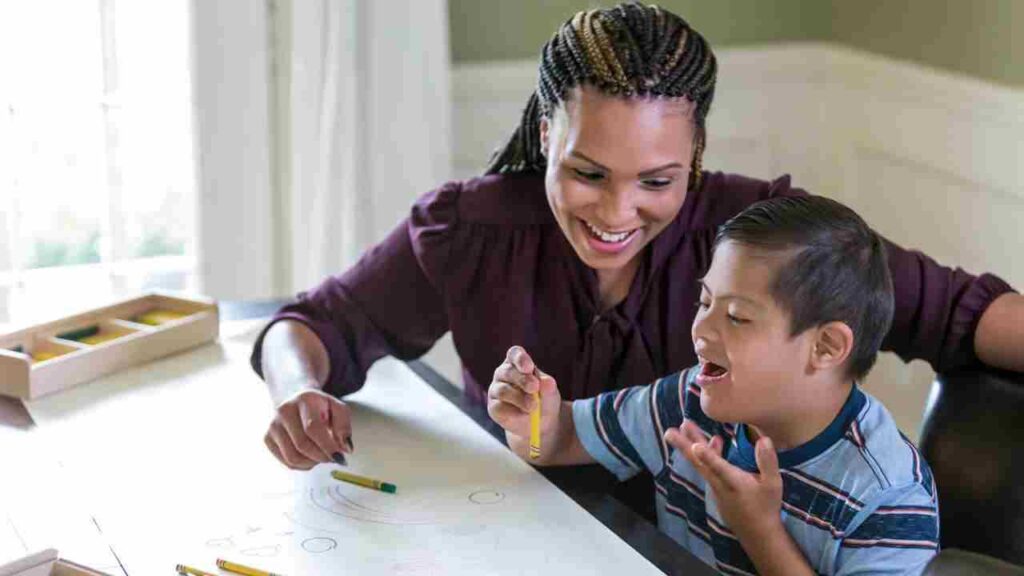Understanding the legal rights of children with IEPs is crucial for parents, educators, and advocates to ensure these students receive a fair and equal education. By knowing their rights, parents can advocate for their child’s needs and ensure that schools are providing appropriate accommodations and modifications. Educators can use this knowledge to create effective IEPs and provide a supportive learning environment.
Advocates can help families navigate the complex legal system and ensure that their rights are protected. In this blog post, we will discuss the legal rights of children with IEPs, including accommodations, modifications, procedural safeguards, and the right to an inclusive school environment.
What is an Individualized Education Program (IEP)?
An Individualized Education Program (IEP) is a legal document that outlines the educational plan for a child with a disability. The IEP is created by a team of professionals, including teachers, parents, and specialists, who work together to identify the child’s strengths and weaknesses and develop goals and objectives to meet their unique needs.
Explanation of IEP
The IEP is designed to provide children with disabilities access to free and appropriate public education (FAPE). It ensures that they receive the necessary accommodations and modifications in the classroom to help them succeed academically. The IEP also includes information about any related services the child may need, such as speech therapy or occupational therapy.
The IEP process begins with an evaluation of the child’s abilities and needs. This evaluation can be requested by either the parent or teacher. Once it has been determined that the child has a disability that affects their ability to learn, an IEP meeting is scheduled. During this meeting, the team reviews all available information about the child’s strengths and weaknesses, including medical records, test scores, teacher observations, and parental input.
Based on this information, the team creates an individualized plan for the child’s education. The plan includes specific goals and objectives for academic achievement and functional performance in areas such as communication skills, socialization skills, behavior management techniques, self-help skills, and motor development.
Read also: The Importance of Individualized Education Plans for Children
Parental Rights in the IEP Process
Parents play a crucial role in developing their child’s IEP. They are considered equal partners in decision-making throughout every step of the process. Parents have several rights under IDEA when it comes to their child’s education:
- Right to participate in meetings: Parents have the right to attend all meetings related to their child’s education. This includes meetings where decisions are made about evaluations or eligibility for special education services.
- Right to consent: Parents must give written consent before any changes are made to their child’s placement or services. They also have the right to refuse any proposed changes.
- Right to notice: Schools must provide parents with written notice before making any changes to their child’s placement or services.
- Right to request an independent evaluation: If parents disagree with an evaluation conducted by the school district, they have the right to request an independent evaluation at no cost.
- Right to mediation or due process: If parents disagree with decisions made by the school district regarding their child’s education or services provided under IDEA, they have options for resolving disputes through mediation or due process.
Accommodations and Modifications
Accommodations and modifications are essential components of an Individualized Education Program (IEP). Accommodations refer to changes made to the learning environment or instructional methods to help a student with a disability access the curriculum and participate in class.
Modifications, on the other hand, involve altering assignments or assessments to meet a student’s individual needs. The goal of accommodations and modifications is to provide students with disabilities equal opportunities for success in school.
There are many different types of accommodations that can be provided to students with disabilities. For example, a student who has difficulty reading may benefit from having text read aloud or using audiobooks. A student who has trouble writing may benefit from using a computer or speech-to-text software. Other common accommodations include extended time on tests, preferential seating, and visual aids.
Modifications can also take many forms. For instance, a student who struggles with math concepts may need simplified assignments or alternative assessments that focus on their strengths rather than their weaknesses. A student with physical limitations may require modified physical education activities that allow them to participate at their own pace and level.
It is important for educators to provide accommodations and modifications as needed because they can significantly impact a student’s ability to learn and succeed in school. By making these adjustments, students with disabilities are better able to access the curriculum and demonstrate their knowledge in ways that work best for them.
In addition to providing accommodations and modifications, schools must also ensure that procedural safeguards are in place to protect the rights of children with disabilities and their parents. Procedural safeguards refer to the policies and procedures that govern how schools identify, evaluate, place, and educate students with disabilities.
Some examples of procedural safeguards include notice requirements (i.e., informing parents of meetings), consent requirements (i.e., obtaining parental consent before conducting evaluations), due process procedures (i.e., resolving disputes between parents and schools), and confidentiality protections (i.e., safeguarding students’ educational records).
Read also: Accommodations & Modifications for Students with Special Needs
Procedural Safeguards
Procedural safeguards are legal protections put in place to ensure that the rights of children with disabilities and their parents are protected throughout the special education process. These safeguards are designed to ensure that parents have a voice in decisions regarding their child’s education and that children with disabilities receive the services and accommodations they need to succeed.
One example of a procedural safeguard is the right to notice. Schools must provide parents with written notice whenever they propose or refuse to initiate or change the identification, evaluation, or educational placement of a child. This notice must be provided in language that the parent can understand, and must include information about the proposed change, as well as information about the parent’s rights under IDEA.
Another important safeguard is the right to participate in meetings. Parents have the right to participate in all meetings related to their child’s education, including IEP meetings and other planning sessions. They also have the right to bring along anyone they choose, including an advocate or attorney.
In addition, parents have the right to access their child’s records. Schools must keep detailed records of all evaluations and assessments conducted on a child, as well as any other relevant documents related to their education. Parents have the right to access these records at any time and may request copies at their own expense.
Perhaps one of the most important procedural safeguards is mediation. Mediation is a voluntary process in which parents and school officials meet with a neutral third-party mediator to try and resolve disputes related to special education services. Mediation is often less adversarial than due process hearings, which can be costly and time-consuming for both parties.
Read also: Strategies For Successful Teaching Of Special Needs Students
Inclusive School Environment
An inclusive school environment is one in which all students, regardless of their abilities or disabilities, feel welcome and supported. It is a place where diversity is celebrated, and every student is valued for who they are. Inclusive education involves adapting the curriculum and teaching strategies to meet the needs of all students, including those with disabilities. This can be achieved through accommodations and modifications, as well as by creating a culture of acceptance and understanding.
Creating an inclusive school environment is important for several reasons. First, it ensures that all students have equal access to education. When students with disabilities are included in regular classrooms, they have the opportunity to learn alongside their peers and receive a quality education that meets their individual needs.
Second, an inclusive school environment helps to break down barriers between students with and without disabilities. It promotes understanding and empathy among all students, leading to greater social cohesion and a more positive school culture.
Children with disabilities have the right to a safe and inclusive school environment that is free from discrimination and harassment. The Individuals with Disabilities Education Act (IDEA) requires schools to provide an appropriate education for children with disabilities in the least restrictive environment possible. This means that children with disabilities should be educated alongside their non-disabled peers whenever possible unless it would not be appropriate for them.
In order to create an inclusive school environment, educators must take steps to ensure that every student feels valued and supported. This includes providing accommodations such as assistive technology or extra time on assignments when necessary, as well as modifying assignments or assessments so that they are accessible to all students. Educators must also work to create a culture of acceptance by promoting diversity through classroom discussions and activities.
Parents can play an important role in promoting inclusivity at their child’s school by advocating for their child’s needs and working collaboratively with teachers and administrators. They can also encourage their child to embrace diversity by modeling acceptance at home.
Read also: Supporting Student Growth In Special Needs Classes
Resources for Parents and Caregivers
As a parent or caregiver of a child with individualized educational requirements, it can be overwhelming to navigate the legal system and ensure that your child’s rights are being protected. Fortunately, there are many resources available to help you along the way.
Advocacy Organizations
Advocacy organizations can provide valuable support and guidance for parents and caregivers. These organizations typically offer a range of services, including:
- Information about legal rights and protections under IDEA
- Assistance with navigating the special education system
- Support in developing effective IEPs
- Referrals to other resources and services
Some well-known advocacy organizations include the National Center for Learning Disabilities, the Autism Society, and the Council for Exceptional Children. However, there are many more organizations out there that can provide assistance tailored to your specific needs.
Legal Resources
Legal resources can also be helpful when navigating issues related to IEPs and special education. These resources may include:
- Legal aid clinics that specialize in special education law
- Referral services that connect you with lawyers who have experience in this area
- Online resources such as Wrightslaw.com, which provides information about legal rights under IDEA
It is important to note that while legal resources can be helpful, they may not always be necessary. In some cases, issues related to IEPs or special education can be resolved through open communication between parents/caregivers and school administrators.
Overall, it is important for parents and caregivers of children with individualized educational requirements to know their rights and have access to resources that can help them navigate the complex world of special education. By working together with educators, advocates, and legal professionals, we can ensure that every child has access to the education they deserve.
Read also: Supporting Special Needs Students: Finding The Right Resources
Conclusion
In conclusion, understanding the legal rights of children with Individualized Education Programs (IEPs) is crucial for parents, educators, and advocates alike. The Individuals with Disabilities Education Act (IDEA) ensures that children with disabilities have access to free and appropriate public education (FAPE), but it is up to the IEP team to create a plan that meets each child’s unique needs. Parents play a vital role in this process and have the right to participate in decision-making. Accommodations and modifications must be provided to ensure that children receive a fair and equal education. Schools must also provide procedural safeguards to protect the rights of children with disabilities and their parents. Finally, all children have the right to a safe and inclusive school environment, free from discrimination and harassment. By working together, we can ensure that every child receives the education they deserve.







